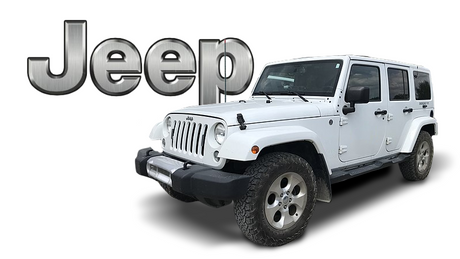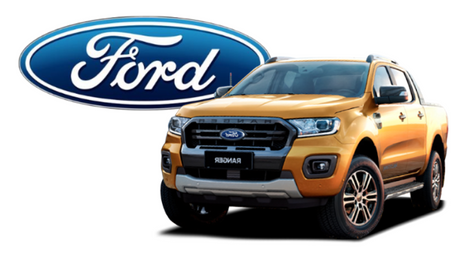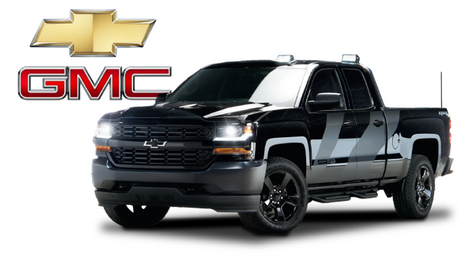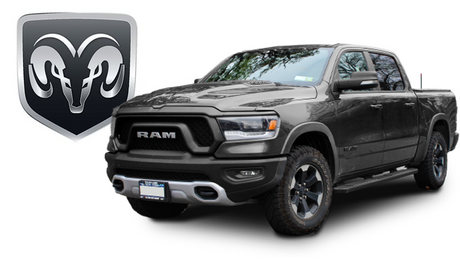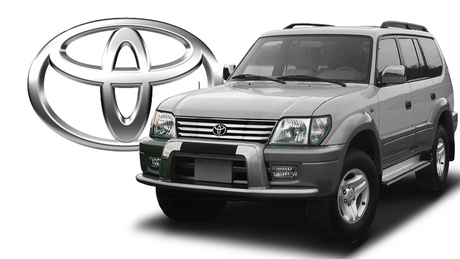We’re going to take you beyond the CB fundamentals and discuss antennas, radio features, and how to think about what equipment is going to work best for your specific vehicle. We’ll cover how to pick the best radio and antenna for your needs, and what mounts you should consider attaching your antenna to your vehicle.
If you are driving a Jeep or pickup truck, two of the most popular vehicles we specialize in at Right Channel Radios, we have specific resource guides for both these vehicles that you can check out below or head over to our learning center to find out more.
CB Radios for Jeeps
CB Radios for Pickup Trucks
CB Radio Features
When you’re picking a CB, it doesn’t matter how much Arnold wants to persuade you – it’s not about power!

Most CBs broadcast at 4-watts of power, so it really comes down to thinking about features. Here are some of the features you might want to think about.
Weather Alerts – Flip a switch and get a real-time weather update.
A backlit display– A fully-illuminated display, ideal if you’re a nighttime driver
Public Address System– Many radios have the ability to attach a PA horn or PA speaker to the back of the radio and mount it in their hood or bumper. With the flip of the switch, it will amplify your voice and broadcast outside your vehicle.
Channel Scanning– Rather than manually search, this function will look for activity on any channel for you and let you know when something is happening on a channel other than the one you’re on.
Bluetooth– If you talk on your phone a lot and want to use your CB to talk hands free, a Bluetooth can help you do that.
SWR meter– A built-in SWR meter can be handy for adjusting your antenna conveniently, though external SWR meters do tend to work better.
Single Side Band– This is the one exception where you can get a radio that broadcasts at 12 watts instead of 4 watts. The caveat is that you need someone on the other side of your transmission that has one to be able to talk with them. If you’re outfitting a fleet of vehicles or you know you’ll be talking with other SSB folks, it’s a great option to consider.
Size– Consider the size of your vehicle and the space you have for your CB as you’re shopping.
The Rules of Picking Antennas
There are three important rules to follow when you’re picking your antenna. The first rule is that higher equals better. The higher up you can mount your antenna, the better it will perform. Longer is also better. If you compare a 2’ antenna on your vehicle, you won’t get incredible performance. A 3’ is the minimum we recommend, but a 4’ is even better. Finally, the coil of your antenna must be above the roofline so you don’t run into performance issues.
Here you’ll see a center load antenna with the tightly wrapped coil section in the middle.

All antennas have this even if you can’t see it. The coil is where the antenna performs most of its activity. It’s the point where the signal radiates out form and the point where it has the best reception as well.
Types of Antennas
There are three main types of antennas you’ll want to choose from:
Fiberglass Antennas
Fiberglass antennas are probably the ones you’re most familiar with, especially if you’ve had CBs before or are in the off-road market. Here you'll see a long, ¼” diameter fiberglass that sticks out. These always mount to the vehicle via a separate mount. They need to screw to the mount and they need a separate piece of coax cable to connect to the radio.

These are the most popular antennas we sell for off-road use, especially with Jeeps and other 4x4 vehicles. They’re versatile, flexible and allow you to mount them just about anywhere. Plus, they’re heavy duty. They can hold up to the rigors of off-road use better than most.
The coil for these is at the top, another big advantage if you are using a soft-top jeep or a vehicle that doesn’t have a big ground plane since your antenna will use the metal from the vehicle to send a signal. The coil at the top really helps with performance.
In terms of range, if you have a 3’ antenna, you’ll probably get 3 to 4 miles. For a 4’, you’ll get a 4 to 6 miles range. These are rough estimates depending on conditions.
Magnet Antenna
The second type is a magnet antenna. Here you’ll see one mounted on top of a pickup truck.

The magnet has three parts – your coil, your coax cable that comes into the base, and a long, really thin skinny whip that goes up the top (almost the size of a paperclip).
All magnet mount antennas come with all three components wrapped into one piece. Magnet antennas are fantastic for vehicles with metal roofs. If you have a pickup, they are probably one of your best (if not the best) antenna choices for your truck. They are easy to install, they are mounted as high up as you can get, and they are are centrally located so you can get a great signal all the way around with no directional bias and no clearance issues.
These are not the best options for soft-top or fiberglass tops vehicles. The coil of these antennas is at the bottom. Since we want that coil at or above the roofline that really puts a limit on where you can put these. If you can’t mount these to the roof, you’re kind of out of luck.
For range, a 3’ magnet mount will receive from 2 to 4 miles of range and a 5’ size will get you 5 to 7 miles of range.
Center-Load Antennas
A center-load antenna has a very stiff metal shaft on the bottom with a plastic coil in the middle that houses the coil and a really thin whip that goes up from there.

These are really common on big rigs and semi-trucks, commonly referred to as trucker antennas. You can use them off-road but we don’t recommend it since they can be damaged more easily. The plastic house for the antenna coil doesn’t do well if low hanging branches or rocks hit it. Since the lower shaft doesn’t give at all, you’ve got more chance of damage to your antenna or to your vehicle.
The coil in these antennas is in the middle, which makes it hard to get it above the roofline. Above it’s shown on a pickup truck, which probably means it works okay, but isn’t working as well as it could. The tradeoff is that you do get better range, from the 7 to 10 mile range.
No-Ground Antennas
If you have a vehicle that doesn’t have a lot of metal like a fiberglass RV or a 4-wheeler with all plastic on the exterior, you’ll want a no-ground antenna.

These won’t work as well as a ground based antenna, but if you don’t use one and instead employ one that needs metal, it won’t work at all. It’s better just to take the performance hit. You’ll also need a special antenna and coax for this, usually sold in unique packages.
Know Your Vehicle
The best choice if you off-road and have a pick-up or Jeep is a fiberglass antenna or a magnet mount antenna. These are the two top recommendations from us. If you’ve got a metal roof, a magnet mount antenna is an awesome choice. For a Jeep or off-road vehicle that may get beat up a bit more, we strongly recommend a fiberglass antenna. When you’re picking your mount, you want to make sure you’ve got a good vehicle ground. If you don’t, your antenna is not going to work. You can’t mount an antenna to your spare tire, because it simply won’t work. Instead, you’ll want to mount it to your vehicle frame or to a place where you can very easily ground out that mount to the frame. Consider your specific vehicle too. There are a lot of mounting locations that will vary based on your vehicle.
We have a wizard right here that will give you specific recommendations for the mounts based on the type of vehicle you have. There’s a good chance we have a specific mount just for your vehicle make and model. And if not, head on over to our mount page where we’ve got all different types of mounts based on location, type, and where you want to mount them. Again, if you’ve got a Jeep or pickup truck, check out our specific guides for both of those vehicles.


